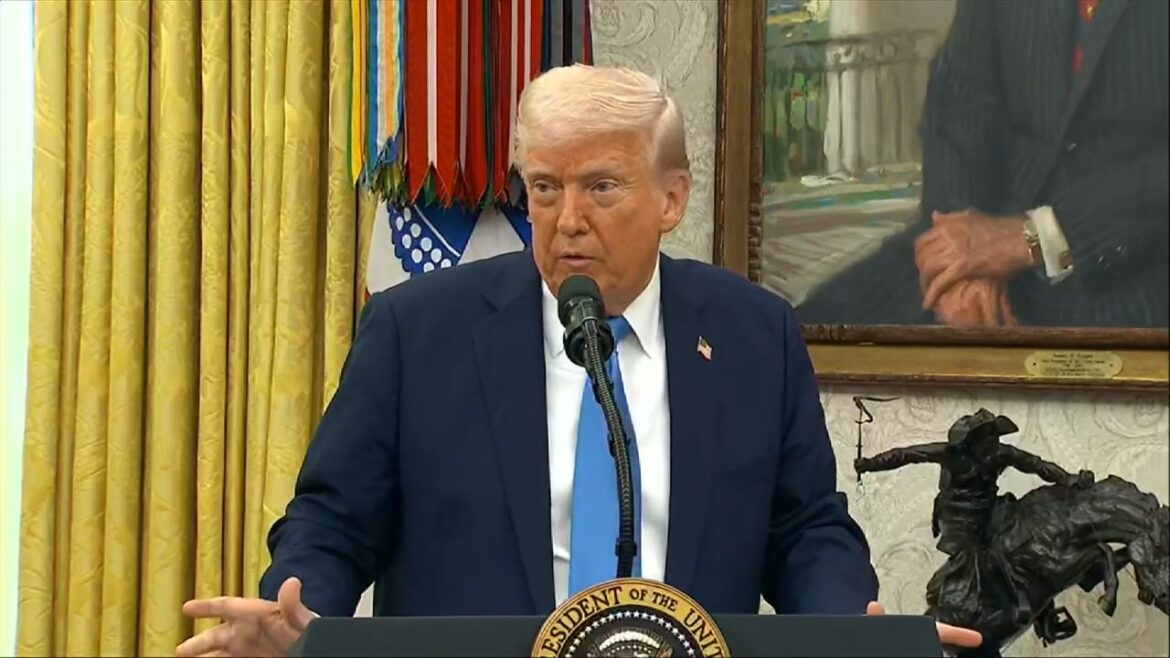Trump Engages in U.S.-Japan Trade Talks Amidst Tariff Concerns
On Wednesday, President Donald Trump took a significant step by personally involving himself in trade discussions with Japanese officials, highlighting the critical nature of the ongoing trade negotiations. This move follows a series of tariffs imposed by the U.S., which have unsettled both the economy and international market dynamics.
Direct Engagement in Trade Negotiations
In a post on his social media platform, Trump announced his intention to attend the upcoming talks, accompanied by key economic advisors, Treasury Secretary Scott Bessent and Commerce Secretary Howard Lutnick. He expressed optimism about the outcome, stating, “Hopefully something can be worked out which is good (GREAT!) for Japan and the USA!”
The Stakes Involved
The decision to engage directly in negotiations reflects Trump’s urgency to secure various trade agreements, especially in light of China’s initiatives to strengthen its trading relationships. This situation presents a test for Trump’s reputation as a skilled negotiator as nations worldwide seek to mitigate the impact of U.S. tariffs.
Impact of Tariffs on Economic Relations
The comprehensive tariffs announced on April 2 by Trump led to unease in the financial markets, prompting fears of a recession. As a result, he implemented a temporary 90-day hold on some tariffs while raising the rates on imports from China to as high as 145%. This pause momentarily exempted Japan from a potential 24% tariff, although a 10% baseline tariff remains in effect, with an additional 25% on automobiles, auto parts, steel, and aluminum.
Japan’s Position in the Talks
Japan, traditionally charging a minimal average tariff rate of 1.9%, is actively participating in these negotiations, the outcome of which will serve as an important indicator of the Trump administration’s ability to foster economic confidence among both domestic voters and international allies. Japan has established a special task force to evaluate the tariffs’ impacts and offer assistance to affected businesses as they prepare for the discussions.
Potential Complications and Counteroffers
While Japanese Prime Minister Shigeru Ishiba has been seeking exemptions from tariff measures, the Japanese government has not clearly articulated what concessions might be offered in exchange. Concurrently, U.S. officials are focused on addressing the $68.5 billion trade deficit with Japan while seeking more access for American products in Japanese markets.
Domestic and International Responses
In the U.S., there is mounting pressure to resolve tariff disputes. California Governor Gavin Newsom recently filed a lawsuit asserting that Trump overstepped his authority by declaring an economic emergency for tariff imposition, indicating the domestic fallout from these trade policies.
Global Context and China’s Role
Simultaneously, China is leveraging the uncertainties surrounding Trump’s measures. President Xi Jinping is on a diplomatic tour of Southeast Asia, promoting China as a reliable trade partner amidst U.S. tariff challenges, aiming to strengthen regional ties and offer greater access to Chinese markets during his visits to Malaysia and Vietnam.
Looking Ahead
As the talks advance, Trump is also expected to address the financial contributions Japan makes toward the cost of U.S. military presence in the region, which has been a contentious issue. Japan’s defense spending is set to increase significantly as part of its national security strategy amid these discussions.
Conclusion
With discussions scheduled to take place soon between U.S. officials and Japan’s chief trade negotiator, Economic Revitalization Minister Ryosei Akazawa, both parties are preparing to navigate the complexities of trade dynamics and defense spending. Each side aims to foster a mutually beneficial relationship that safeguards their national interests while addressing the broader economic implications of ongoing tariff policies.

